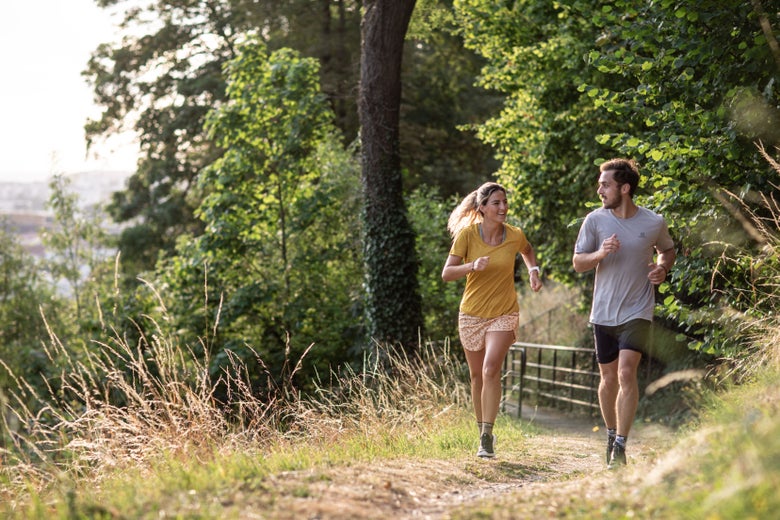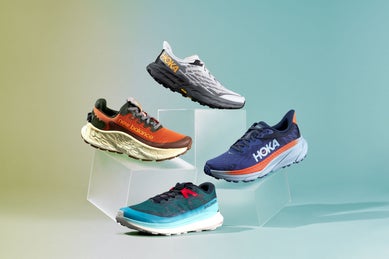How to Choose a Trail Running Shoe
Updated: 15th April 2024
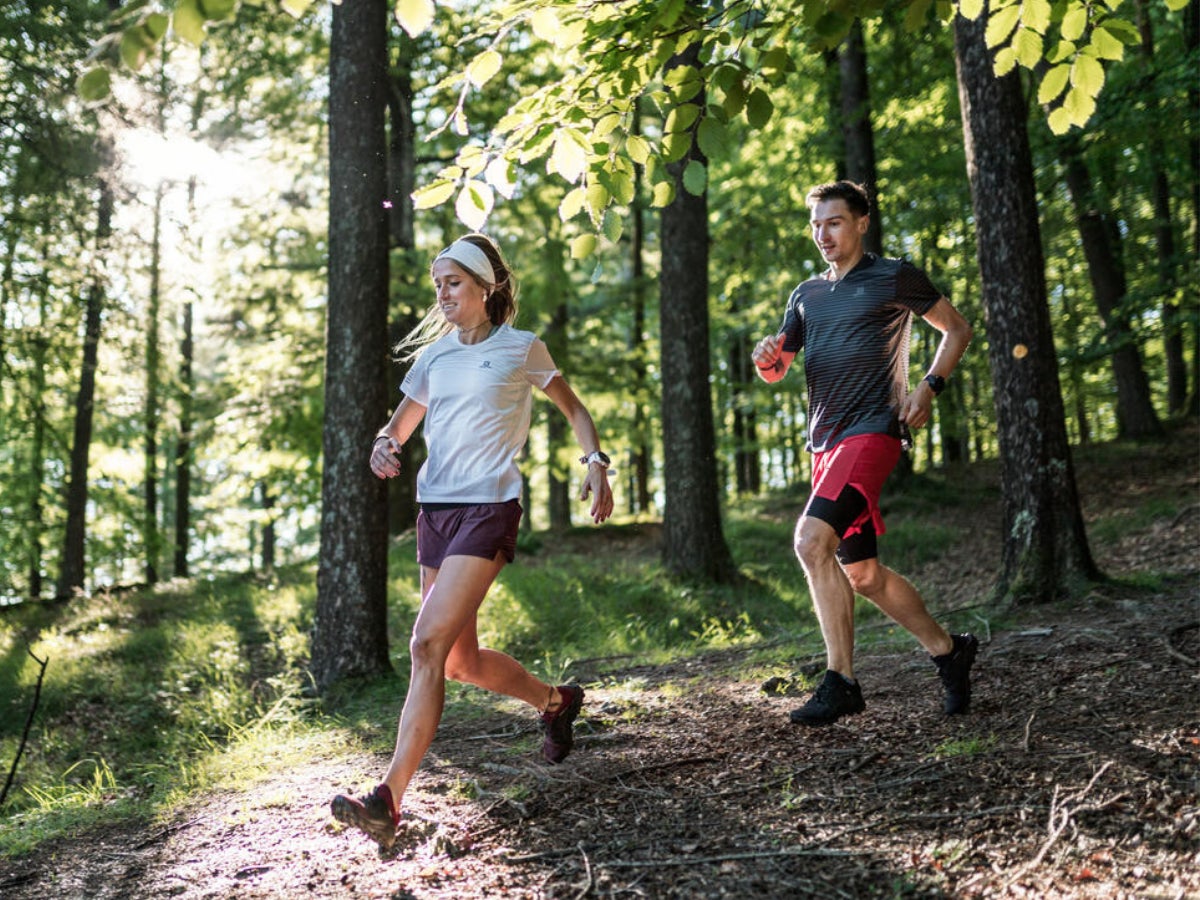
When you're ready to make the leap to trail running, choosing a trail running shoe will be your first step. Unlike road running shoes, trail shoes are specially designed to offer better protection, stability, and traction for running on uneven surfaces. With so many options available, it's important to note there are different trail running shoes for different terrains. This guide will help you identify the various types of trails and the design features specific to trail shoes to help you select the appropriate shoe that will match your needs and optimise your experience.
The Basics of Trail Running
With trails ranging anywhere from local dirt paths to muddy grasslands to alpine mountaintops comes the need for a shoe to match the demands of the terrain. And just as you always want the right tool for the job, so too should you choose the right trail shoe for what lies ahead.
Trail shoes are carefully engineered and developed for specific conditions, such as rocky trails or soft mud. The objective is to provide the runner with a combination of features that help with stability, speed, injury prevention, and comfort during the run. Therefore, choosing the correct trail running shoe is essential.
What Makes Trail Shoes Different
Trail running shoes are constructed with features that road running shoes don't have, and these features add to the safety, protection, and durability needed to tackle the unpredictable terrain you will encounter when you venture off the beaten path. Let's look at the four design features that make a trail running shoe different from a road running shoe, and find out how they contribute to a safe and fun off-road adventure.
1.Tear-Resistant Upper
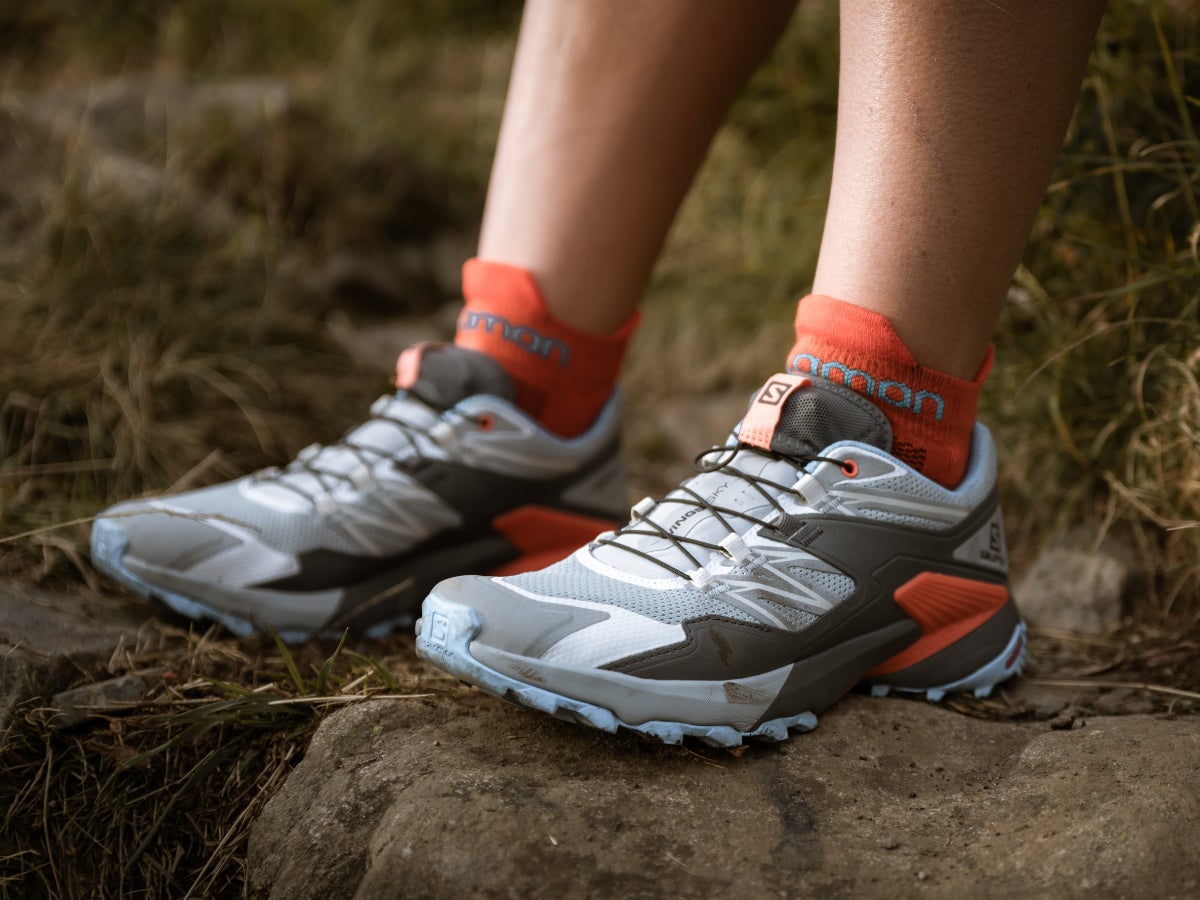
When you hit the trail, rocks, branches, and other natural debris will hit you back. Having a durable upper is essential, both for the longevity of the shoe and for the protection of your feet. Many trail shoes are built with tear-resistant uppers to withstand anything the trail might throw at your shoe. One of the reasons you don't want to run in road shoes on the trail is that the materials of road-specific uppers are not designed to be as durable for handling abrasions and tears.
2. Lugged Outsole

Like treads on a tire, the outsole of your shoe helps determine what kind of grip you will have on the surface you are running on. Trail shoes typically have deeper, more pronounced lugs on the outsole than road running shoes, providing more traction between your foot and the ground. Lugs will vary in size, shape, and depth. For a harder trail, you will want shallower lugs, and for softer, muddy trails, you should go with deeper, aggressive lugs for a more solid grip to avoid slipping.
Equally important is the spacing of the lugs. Lugs positioned farther apart from each other will allow mud to shed off from the bottom of the shoe, preventing it from accumulating and weighing you down. Conversely, more closely spaced lugs are suitable for rocky, dry trails and will offer you more stability and efficiency.
3. Toe Bumper
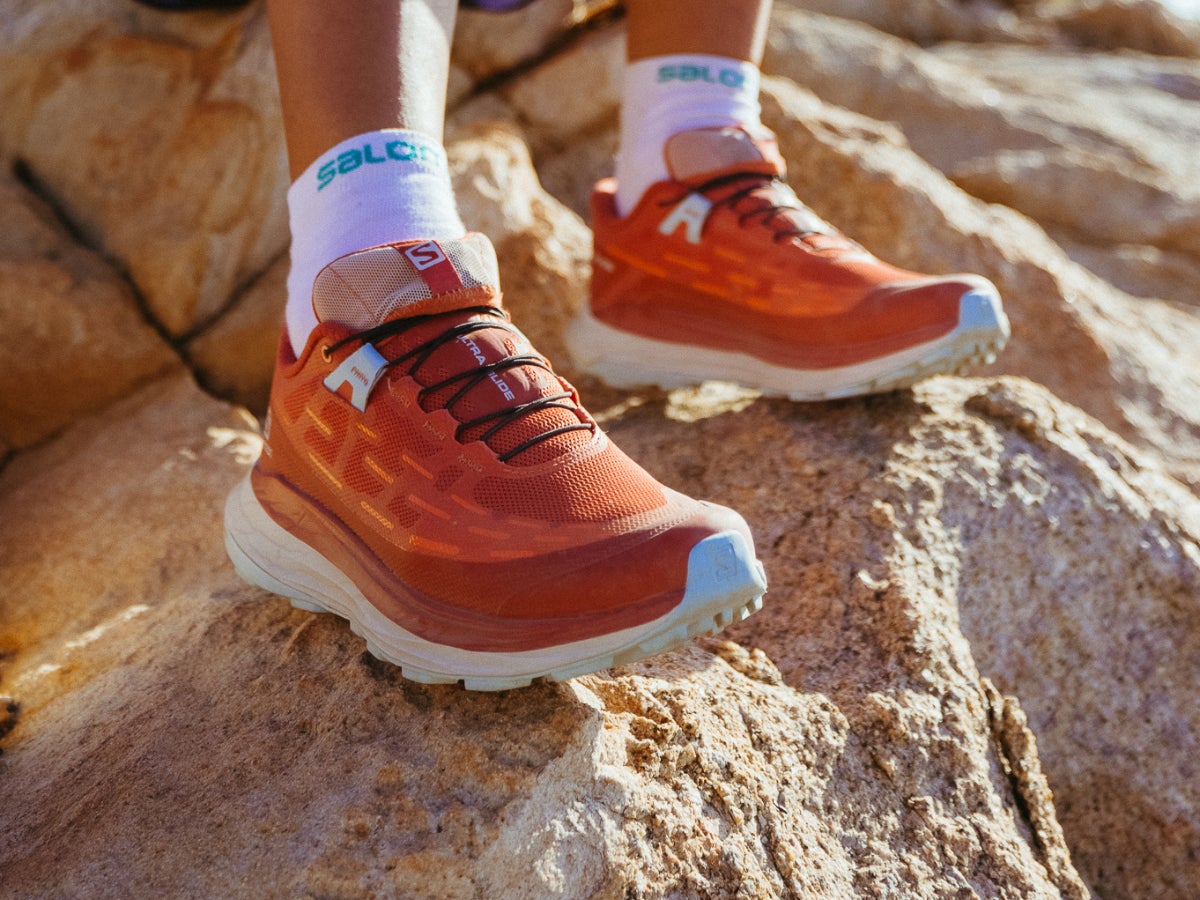
To help protect your toes from any rocks or debris that your feet may encounter on your run, running shoes are built with reinforced material at the front of the shoe. Trail shoes generally have a larger or more durable toe bumper than road shoes to prevent breakage, stubbing, or bruising of your toes from tree roots, jagged rocks, and stones.
4. Rock Plate
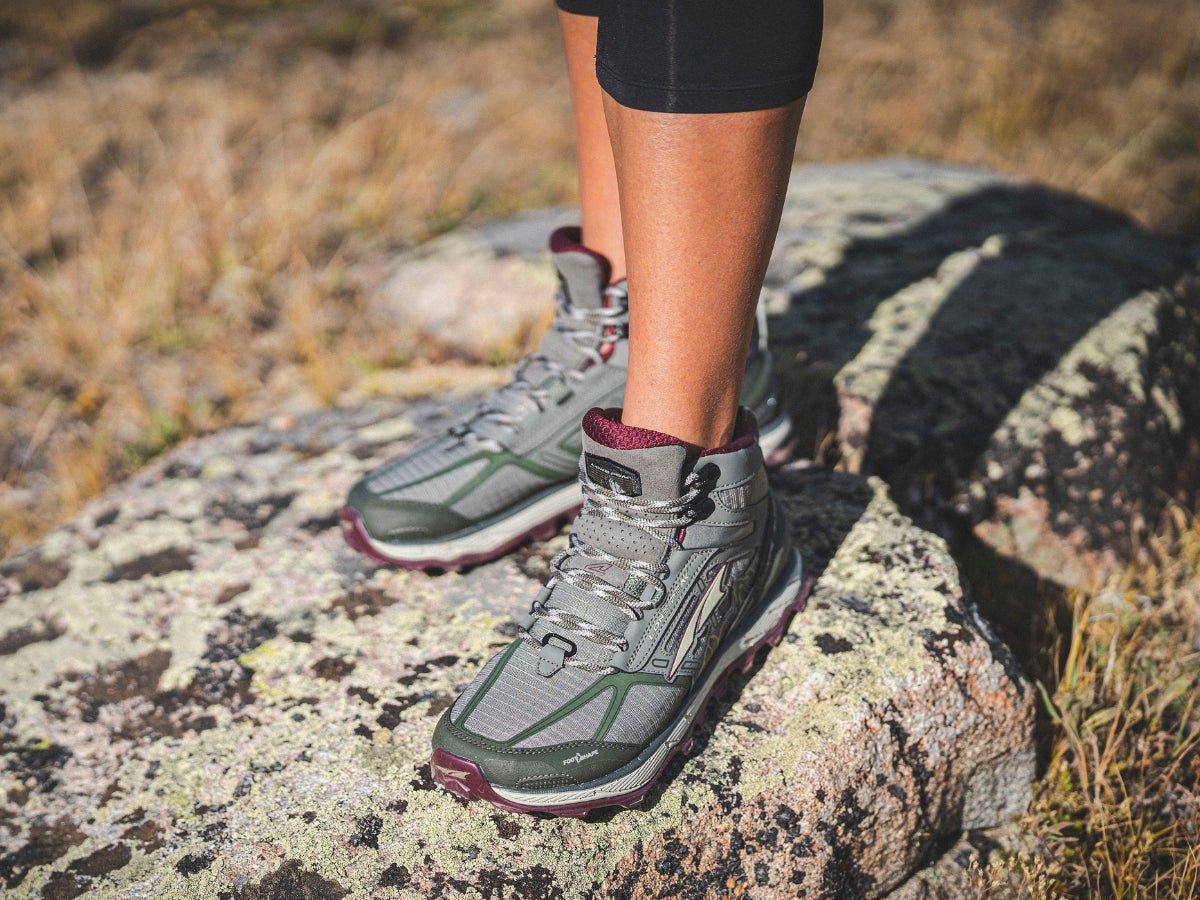
Some trail shoes contain a rock plate, a material embedded between the outsole and the midsole of the shoe for underfoot protection. The rock plate may add a bit of stability and stiffness to the shoe, but more importantly, it helps protect the soles of your feet from sharp rocks and stones that you may run over. This helps to eliminate the painful ouch factor, especially on technical trails. In turn, the rock plate allows you to pick up the pace without worrying about injuring your feet on rugged terrain.
Types of Trails
Smooth Trails & Fireroads
Smooth trails are often shared by walkers, cyclists, and runners who desire to enjoy the outdoors away from the typical hustle and bustle of city life. These types of trails are usually well-developed and can be composed of crushed gravel or hard-packed dirt. Some paths may even be paved for better long-term use. These multi-use trails are conveniently located in parks, metro areas, and small towns. There is little difficulty traversing these paths, which means they can generally be used by people of all fitness levels. Because of this, smooth trails and fire roads can be heavily trafficked, so it is important to be extra aware of other runners and walkers. On the plus side, crowded trails can bring you into contact with other like-minded folks seeking enjoyment when exercising in nature.
Best Shoes for Smooth Trails
The ideal shoe for these types of trails will be a versatile running shoe that can handle the daily rigor of both multi-use trails and pavement. These types of running shoes are similar to road shoes because they tend to feature more cushioning to offer comfort on the variety of terrain they will encounter. They are further characterised by lightweight, durable upper materials and mildly pronounced outsoles with short lugs for grip on off-road terrain. The outsole will provide just enough traction to handle gentle trails but not so much that they will feel uncomfortable on smooth pavement. These shoes are sometimes referred to as road-to-trail because they work well on paved routes and multi-use trails alike.
Rocky & Technical Trails
These trails are characterised by rugged, rocky, and technical terrain with potentially steep inclines or declines. Rocky and technical trails require mental focus, agility, and shoes that inspire confidence. They must be approached with a general amount of navigational knowledge and an honest evaluation of one's trail readiness. Mountain trails are included in this category, and they can be very rewarding, complete with beautiful, commanding views that offer a satisfying sense of accomplishment.
Best Shoes for Rocky & Technical Trails
Shoes best suited for rocky and technical trails are defined primarily by the aggressive sticky traction on their outsole and the durable upper materials. The sticky lugs enable wearers to maintain a grip on slippery or treacherous surfaces while bounding across the trail. In addition to the grippy outsole, these shoes must protect the runner's feet from injuries caused by stone bruising or abrasions. A rock plate is typically embedded within the shoe's sole to accomplish that protection, and the uppers are made of materials that shield the feet from sharp debris.
Soft & Muddy Trails
As the name implies, these trails are characterised by their muddy, soft, and wet surfaces. Venturing onto these soggy paths will likely result in mud-caked shoes and mud-stained clothing, but it will undoubtedly be a joy for the runner who doesn't mind getting a little messy. Often called "fell running," especially in the UK, soft trails can have a fair amount of rolling hills or exist near the countryside. Conditions on soft trails are even more compelling when subjected to a wet climate or recent precipitation, giving way to dynamic, muddy slopes.
Best Shoes for Soft Trails
For muddy, slippery trails, your go-to footwear should have deep, claw-like lugs that will dig into the soft terrain, keeping you on your feet rather than sprawling face-first into the slippery mud. The uppers on these types of shoes provide a supportive hold on your foot with a locked-in heel to keep you confident as you trudge through the slick landscape. Some uppers even feature waterproof material, identified in the shoe name by the letters GTX (GORE-TEX). The added benefit from GTX is dry feet on wet trails, but the downside will be less breathability and water drainage, so you will need to weigh the pros and cons and decide which features you value more.
Final Considerations
While this may seem like a lot of information, the most important part of choosing a solid trail shoe will be finding one that fits properly and feels comfortable. The product pages on our site offer a lot of information on the fit and purpose of each shoe, and you can also check our reviews to get a better sense of what other customers think. Educate yourself on where you plan to run and match the shoe for those conditions. These simple guidelines will help keep you on your feet and enjoying the beautiful journey of trail running.
